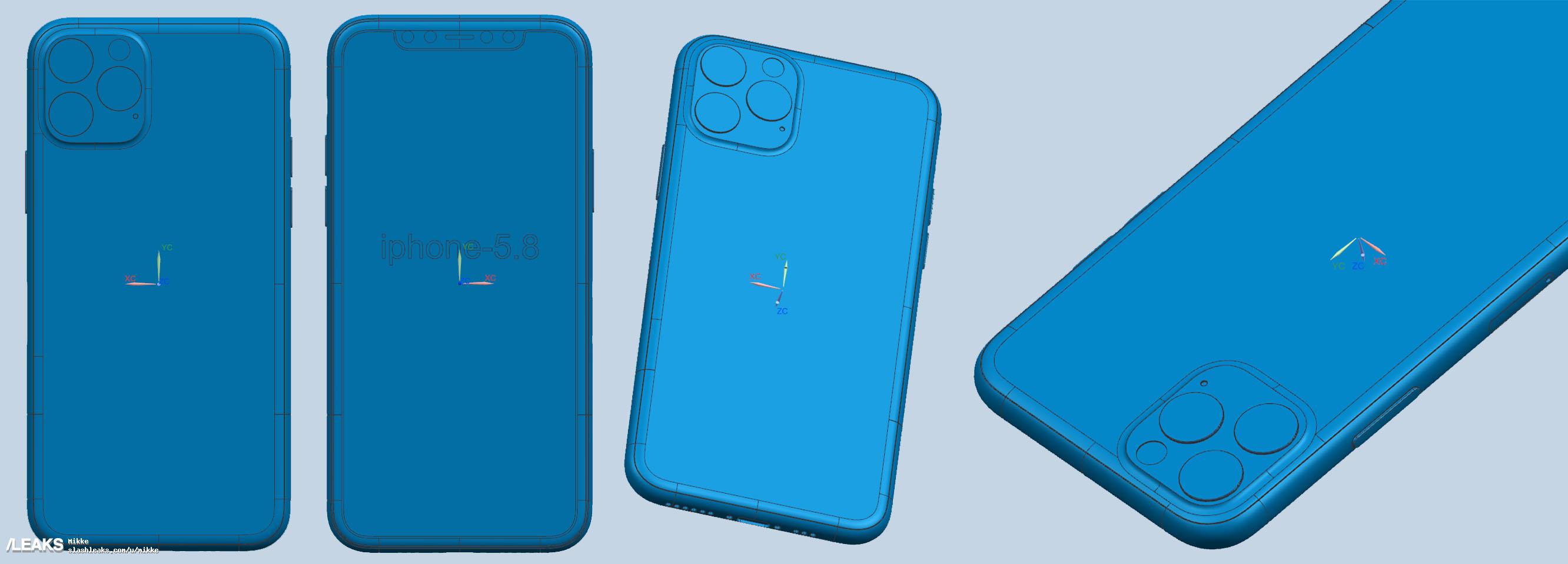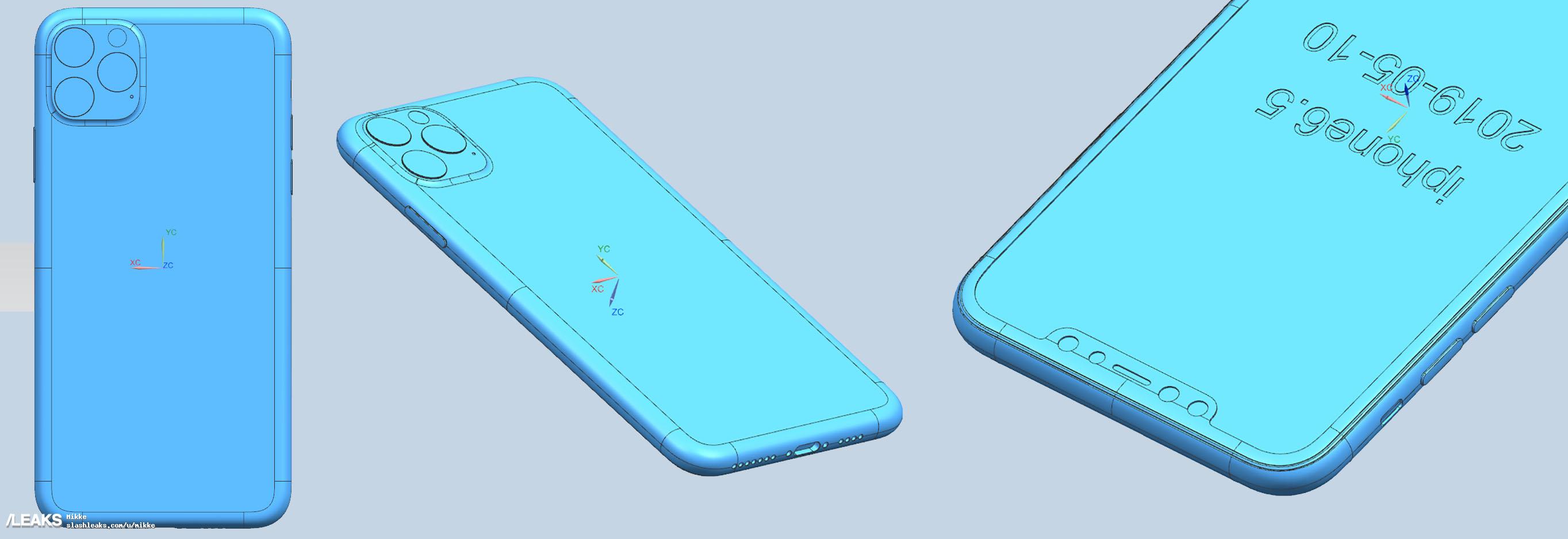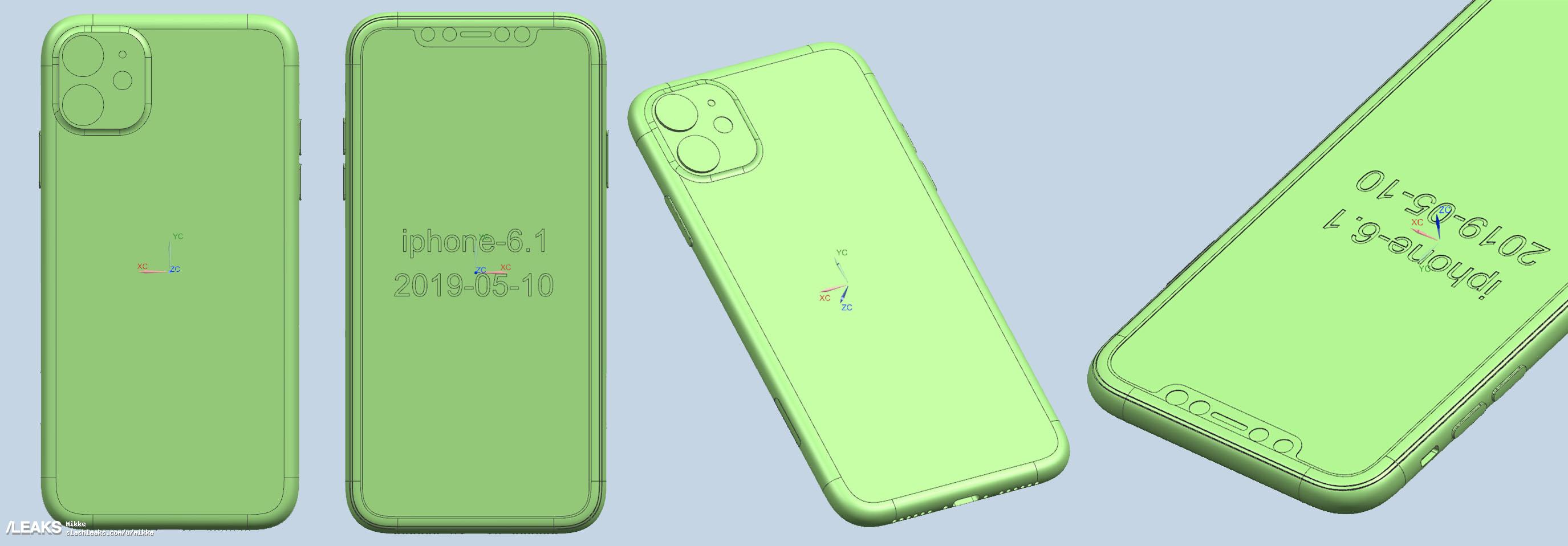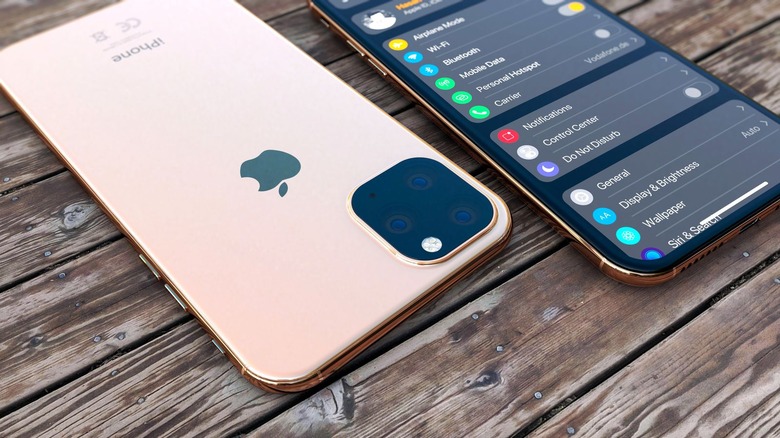New iPhone 11 Leaks Seem To Confirm The Newest Signature Feature You'll Learn To Love
The iPhone X brought over a new smartphone design that everyone in the business ended up copying, the notch display that was a necessary compromise between form and function. It was also the phone's signature feature. The phone featured an all-screen display like no other device, and the clones never came close to replicating it. But it also had that partial bezel at the top that accommodates the most sophisticated smartphone authentication system out there — also something the clones never got right. With the iPhone 11, we're expecting a similar design compromise thanks to all the leaks we've seen so far this year, and a brand new set of CAD designs that made their way online seem to give further credence to these rumors.
iPhone fans who're already considering their next iPhone upgrade already know what I'm talking about: the camera module on the back that will house three camera lenses on the iPhone 11 and iPhone 11 Max, and two lenses on the iPhone 11R or whatever they end up calling the iPhone XR's successor.

Posted on SlashLeaks these images show the iPhone 11, iPhone 11 Max, and iPhone XR CAD designs. We're looking at phones that look a lot like their predecessors when it comes to the screen design. We're looking at displays with notches for Face ID on all three phones and minimal, symmetrical bezels.

The only thing that changes is the camera design on the back. The camera bump is getting a lot bigger on the iPhone 11 phones, as the extra lenses will take up additional space. The camera module, with its square shape, looks a lot like what Huawei did with the Mate 20 Pro last year, although that triple-lens camera was placed in the middle of the phone's top half.
Apple is sticking with the left corner for the camera module, a decision that has a lot to do with the internal space available for the cameras.

While some people may not like the size of that camera bump, or how Apple placed those camera lenses, it's the bigger picture that counts. Apple made dual-cam phones popular and convinced other smartphone vendors to push the number of rear-lenses to as many as five. If the iPhone maker is moving to triple-cam sensors on the iPhone 11 phones, it has good reasons to do so. And we should expect Apple to explain all the new camera features coming to the iPhone 11 thanks to the extra lens. The same goes for the iPhone 11R, which should see several upgrades of its own, in spite of rocking a dual-lens shooter.
To deliver those features, Apple needs that camera bump, and it needs for it to have a square shape. It can't reduce the thickness of the cameras for the time being, and it doesn't favor vertical triple-lens cameras, as seen on Huawei flagships — and soon on the Galaxy Note 10.
In other words, you'll get used to the new iPhone camera design and learn to live with it, just as you did with the notch. And these multi-lens cameras will be the iPhone 11's signature feature.
On a related note, Google is going forward with a similar design for the Pixel 4's rear camera, which will only have two lenses. Like Apple, Google must have a good reason for choosing this particular design compromise.
